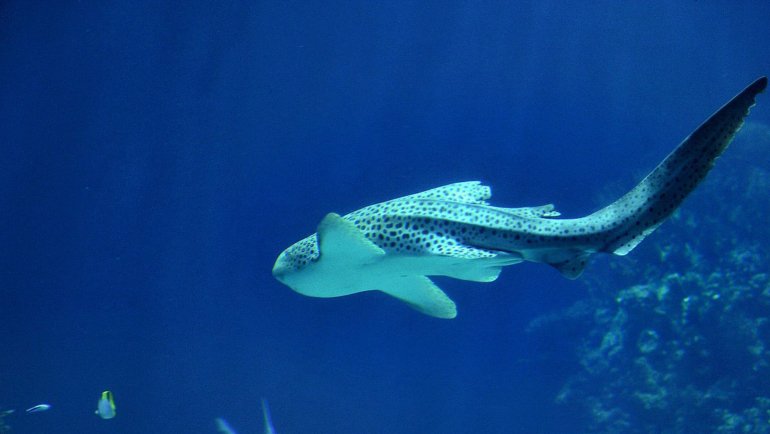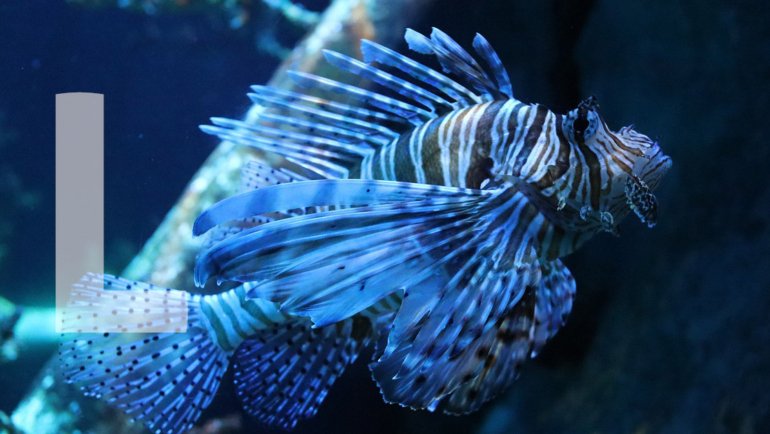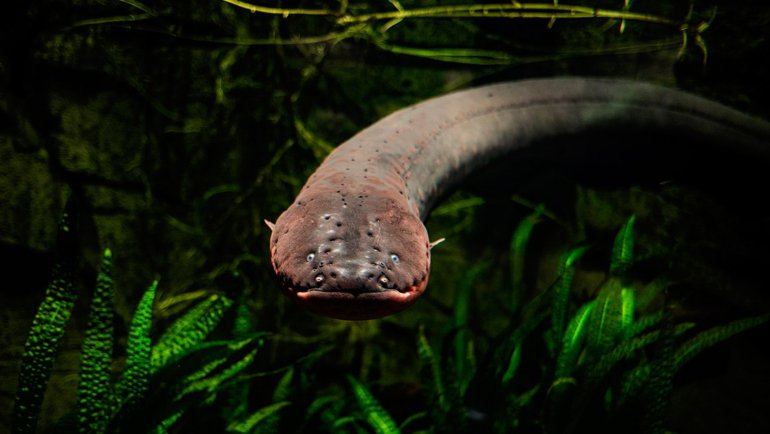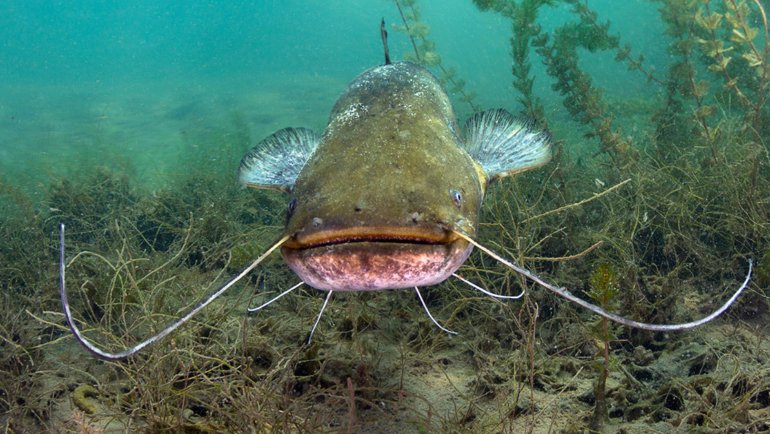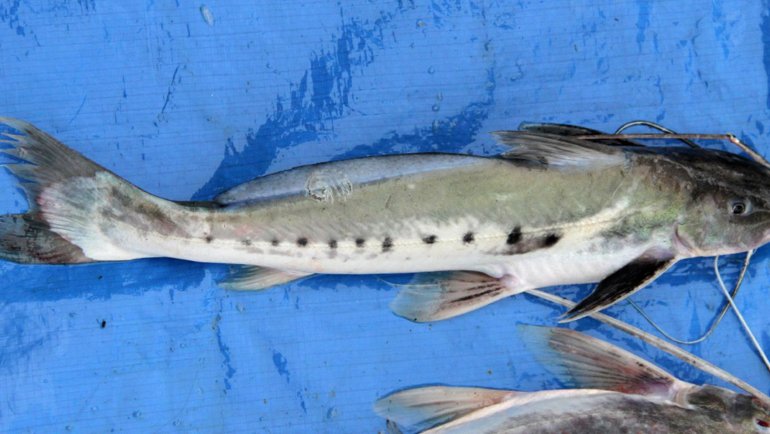Have you ever wondered which aquatic residents sport the largest peepers in the pond? While some of these sea-dwellers are familiar faces, others might be new to you. Either way, one thing unites them all – their impressively big eyes!
These 15 fish have adapted in their own unique ways to their environments, and their oversized eyes are a testament to their survival strategies. So, let’s dive in and meet these fascinating creatures with the most captivating gazes!
Telescope Goldfish
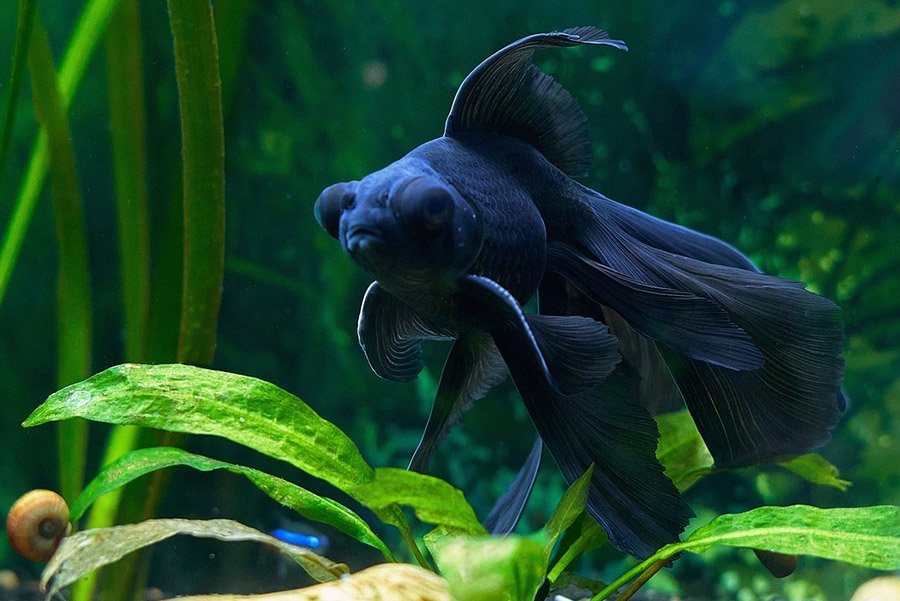
- Scientific Name: Carassius auratus
- Found in: Domestic aquariums worldwide
The Telescope Goldfish, named for its distinctive, protruding eyes, is a variety of fancy goldfish. These fish are popular in home aquariums for their unique look and active personalities.
Their diet usually consists of small insects, crustaceans, and plant matter. Due to the positioning of their eyes, they have relatively poor eyesight, which can make feeding a challenge in a tank with faster, more aggressive fish.
Did you know? The telescope goldfish is also known as the “dragon eyes” or “black moor” depending on its coloring.
Bigeye Fish
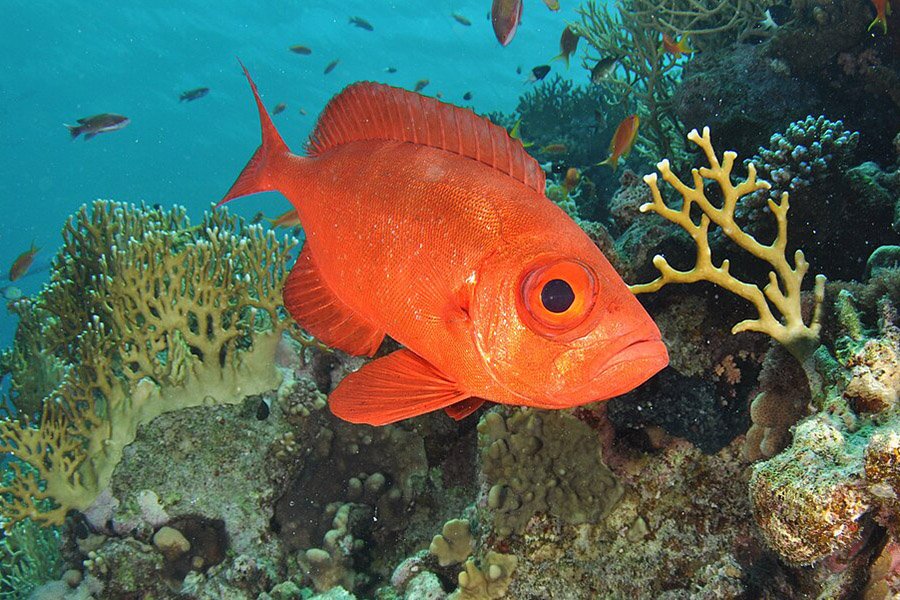
- Scientific Name: family Priacanthidae
- Found in: Atlantic, Indian, and Pacific Oceans
The Bigeye Fish is a family of marine species recognized by their unusually large eyes, which allow them to see well in dark or murky waters. They are usually bright red or silver in color, depending on the species, and prefer coral reefs and rocky environments. They have a mostly nocturnal lifestyle, hunting small fish and crustaceans during the night and hiding during the day.
Did you know? Bigeye Fish can change color based on their mood, time of day, or in response to threats.
Horse-Eye Jack
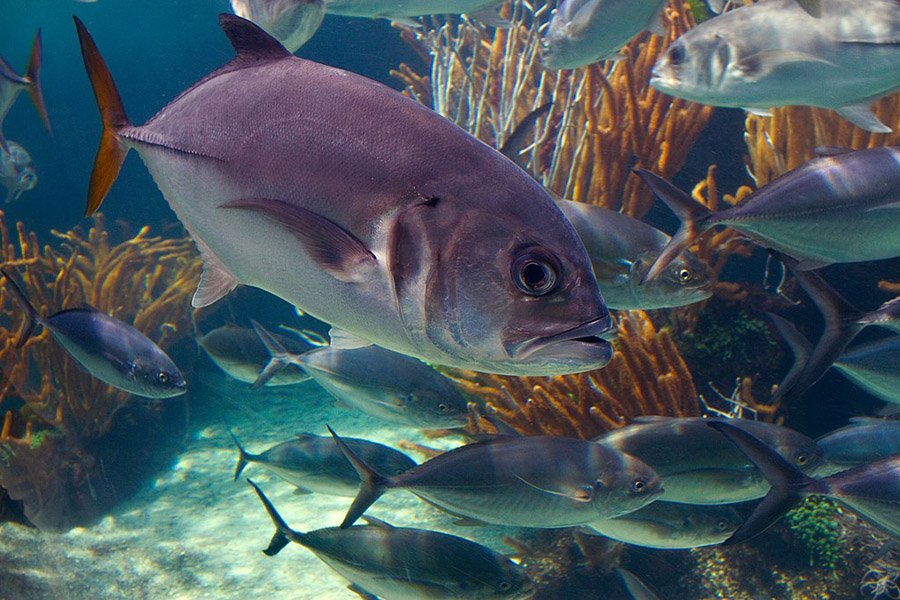
- Scientific Name: Caranx latus
- Found in: Atlantic Ocean
The Horse-Eye Jack is a game fish known for its large, reflective eyes, which help them locate prey in deep or murky water. These fish are typically bluish-gray or green and can be found near the surface or in deeper waters of the open ocean. They are highly social, often forming large schools, and their diet consists mainly of smaller fish and invertebrates.
Did you know? The Horse-eye Jack’s name originates from its unusually large eyes, which resemble those of a horse.
Barracuda

- Scientific Name: Sphyraena spp.
- Found in: Tropical and subtropical oceans worldwide
Barracudas are large, predatory fish known for their fearsome appearance and swift attacks. Their bodies are long, slender, and covered in silvery scales. They have two separate dorsal fins, a large mouth, and strong jaws equipped with sharp, fang-like teeth. Their large eyes enable them to hunt with precision in clear as well as murky waters.
Did you know? Barracudas are capable of swimming at speeds of up to 27 miles per hour.
Swordfish
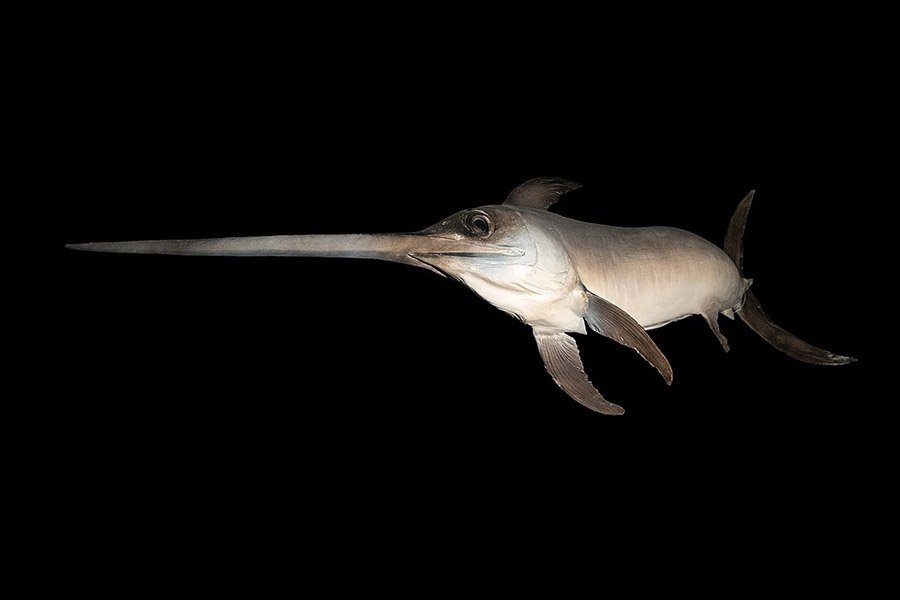
- Scientific Name: Xiphias gladius
- Found in: Atlantic, Indian, and Pacific Oceans
Swordfish, easily recognized by their long, flat bill, are large, predatory fish. They have streamlined bodies and large eyes, adaptations for hunting at the depths where light is scarce. Their diet primarily consists of various types of fish and squids. Despite their intimidating size and sword-like bill, swordfish are preyed upon by various large predators such as sharks and killer whales.
Did you know? Swordfish are among the fastest fish, but speeds are often wildly exaggerated in popular culture to be up to 97 km/h (60 mph).
Bigeye Tuna
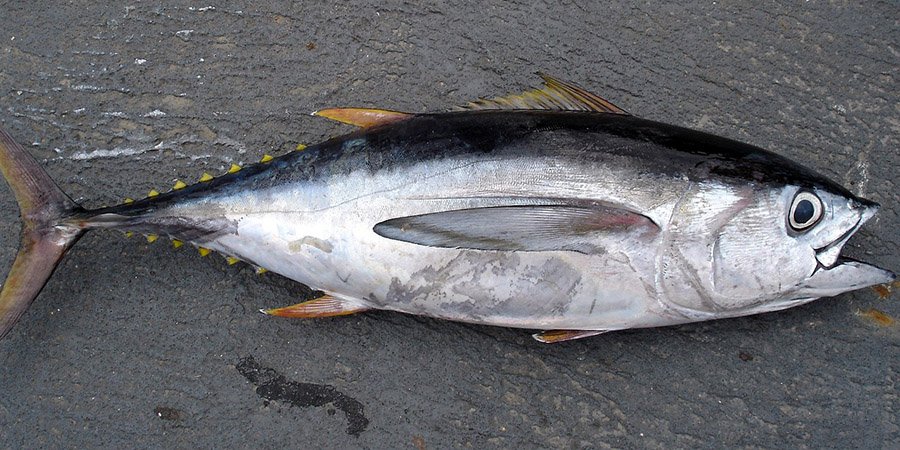
- Scientific Name: Thunnus obesus
- Found in: Tropical and temperate waters of the Atlantic and Pacific Oceans
The Bigeye Tuna, as its name suggests, has larger eyes compared to other tuna species. This adaptation is believed to be a result of their preference for deeper, darker waters where large eyes are beneficial for capturing as much light as possible. They are robust, fast swimmers with a diet that consists primarily of other fish and squids.
Did you know? The bigeye tuna can dive deeper than 500 meters to find its prey.
Tarpon
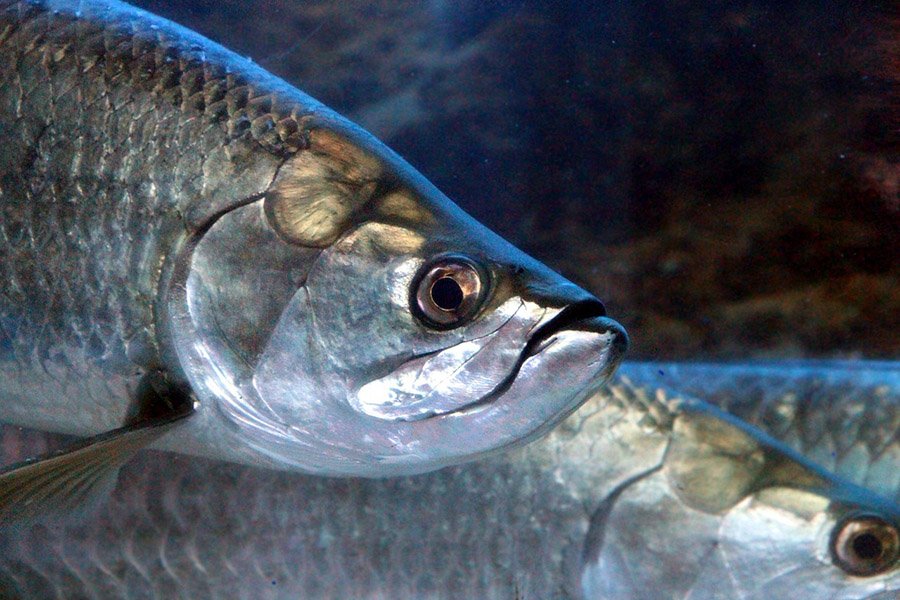
- Scientific Name: Megalops atlanticus
- Found in: Atlantic Ocean
Tarpons are large, air-breathing fish known for their bright silver scales and large, shiny eyes. They can grow to lengths of 4-8 feet and are notable for their acrobatic behavior when hooked, including spectacular leaps out of the water. Tarpons are opportunistic feeders and eat a variety of prey such as small fish and invertebrates.
Did you know? Tarpons can gulp air and extract oxygen via a lung-like bladder when they are in hypoxic (low-oxygen) environments.
Squirrel Fish
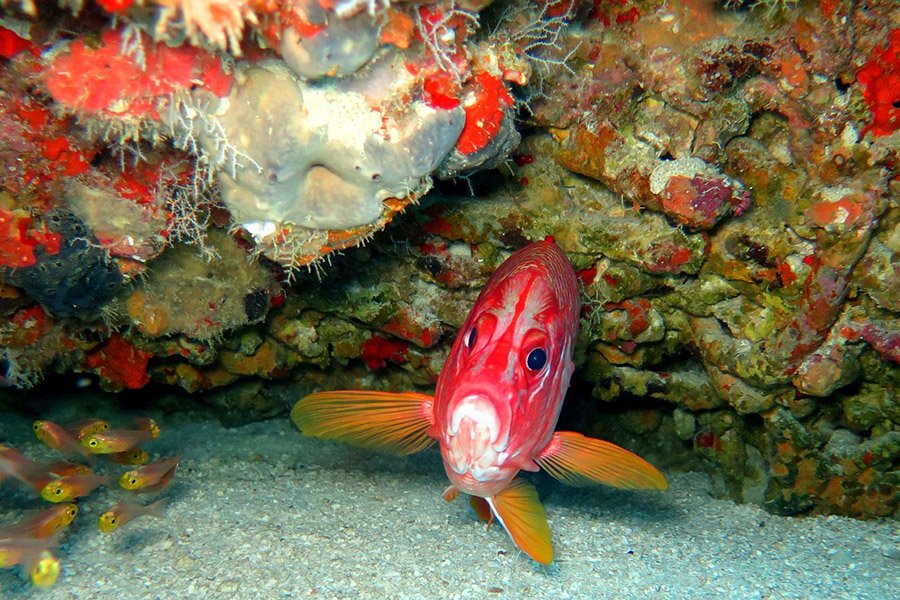
- Scientific Name: family Holocentridae
- Found in: Atlantic, Indian, and Pacific Oceans
Squirrel Fish, recognized for their large eyes and bristly appearance, are a family of mostly small, colorful fish found in the tropics. They are nocturnal creatures that hide in crevices during the day and hunt for small crustaceans and fish at night. They have spiny fins and a reddish hue, and they’re known to be quite shy, often darting away when approached.
Did you know? Squirrelfish communicate with each other by grinding their teeth, producing a unique chattering sound.
Spotted Ratfish
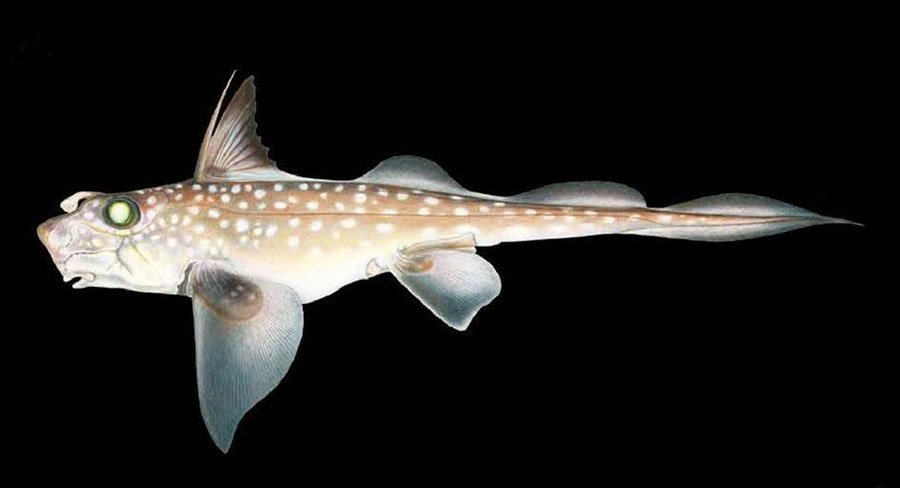
- Scientific Name: Hydrolagus colliei
- Found in: North Pacific Ocean
The Spotted Ratfish is a unique species of chimaera, a group of cartilaginous fish related to sharks and rays. It gets its name from its rat-like tail, but it’s the large, greenish eyes that make it stand out. These eyes allow them to see better in the dark depths of the ocean. The Spotted Ratfish spends most of its time near the seafloor, where it hunts for small fish and invertebrates.
Did you know? The male Spotted Ratfish has a retractable sex organ on the forehead.
Rockfish
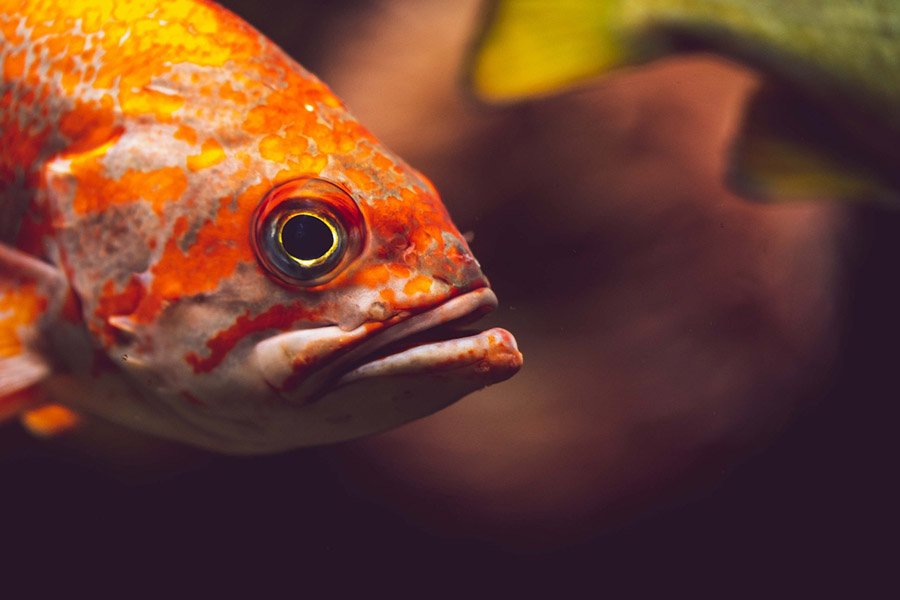
- Scientific Name: Sebastes spp.
- Found in: Pacific Ocean
Rockfish are a diverse family of fish named for their preference for rocky shorelines. Their large eyes allow them to navigate and hunt in these sometimes murky environments. Rockfish are viviparous, which means they give birth to live young—a rarity among fish. They’re popular among anglers for their meat, which is considered delicious.
Did you know? Some Rockfish species are known to live for over 100 years!
Dogfish
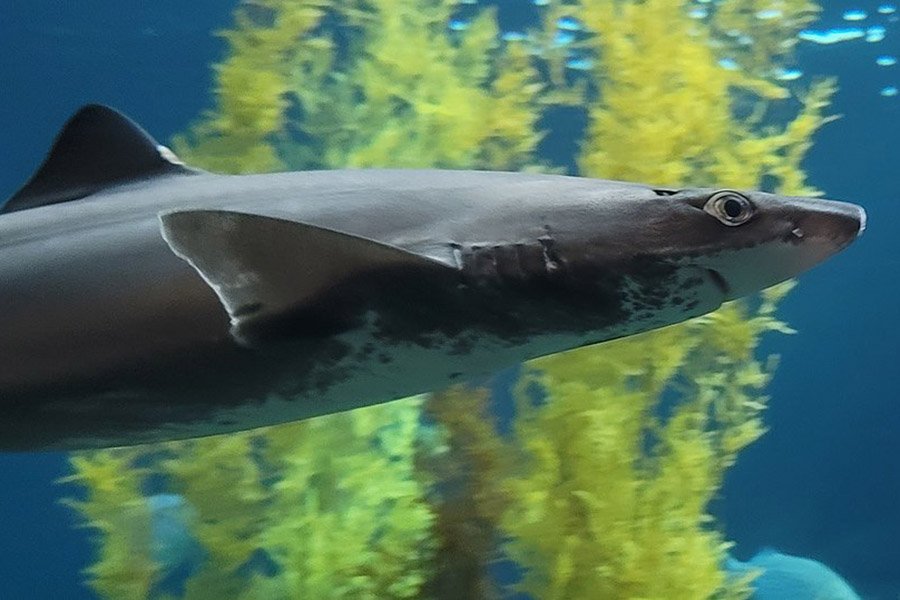
- Scientific Name: family Squalidae
- Found in: Various oceans worldwide
Dogfish is a family of sharks characterized by their small size and large, reflective eyes. They get their name from their tendency to hunt in packs, like dogs. They are bottom-dwellers and have a wide diet that includes fish, squid, and crustaceans. Most dogfish species have venomous spines in front of their dorsal fins that they use for self-defense.
Did you know? Dogfish sharks are among the few fish that have been found to possibly exhibit a form of sleep.
Pufferfish
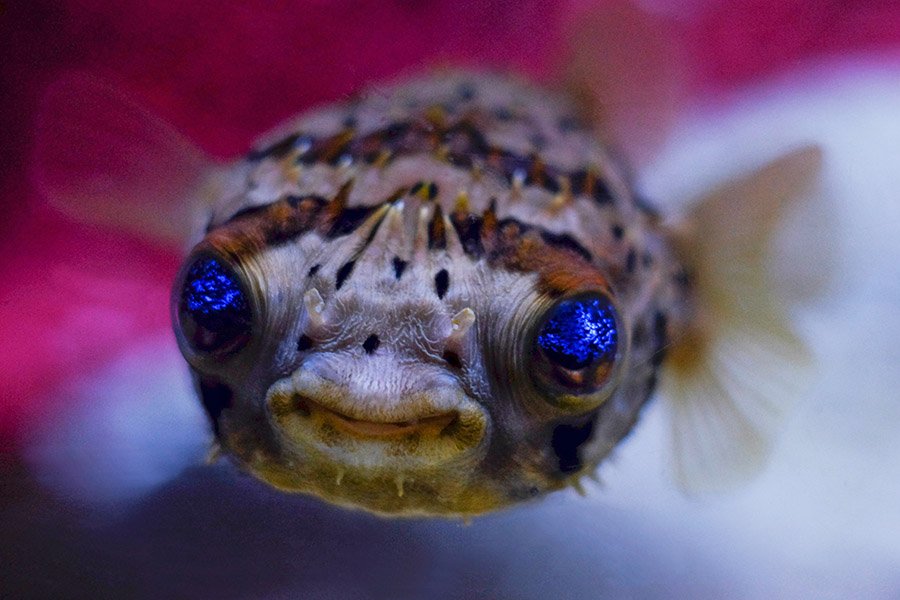
- Scientific Name: family Tetraodontidae
- Found in: Tropical and subtropical oceans worldwide
Pufferfish, also known as blowfish, are unique fish best known for their ability to inflate their bodies into a ball-like shape when threatened. They have large, expressive eyes and often display vibrant colors and patterns. Despite their cute appearance, they are highly toxic, making them a risky meal for potential predators.
Did you know? The toxin in pufferfish, tetrodotoxin, is 1200 times more poisonous than cyanide.
Blue Shark
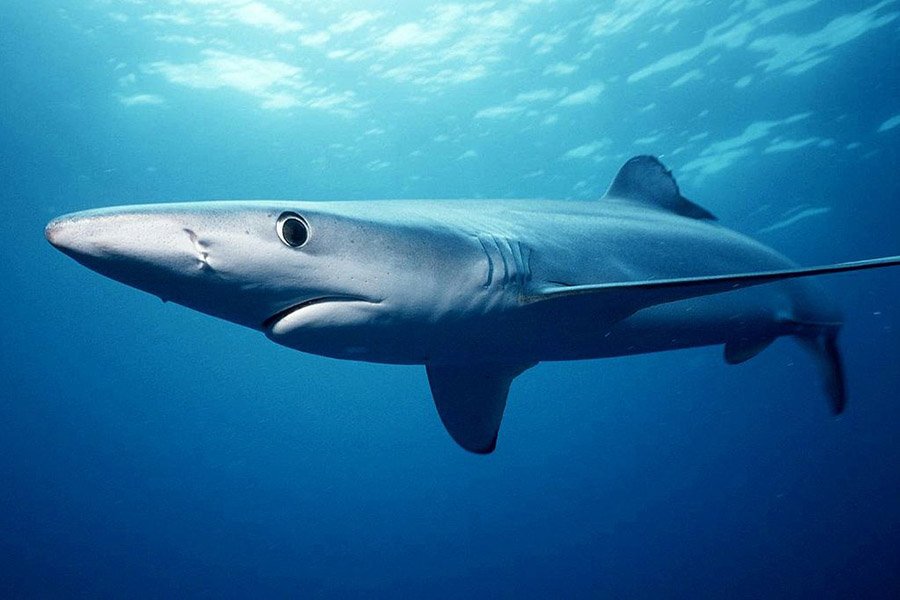 Source: Wikimedia Commons
Source: Wikimedia Commons- Scientific Name: Prionace glauca
- Found in: Deep waters of the world’s temperate and tropical oceans
The Blue Shark is known for its slim body, long, pointed snout, and large, round eyes. It has a deep indigo blue from the top and a bright white underside. These sharks are particularly fast and agile swimmers, able to capture a wide range of prey including squid, birds, and other fish.
Did you know? Blue sharks are known to make lengthy seasonal migrations to seek cooler waters during the summer months.
Porbeagle Shark
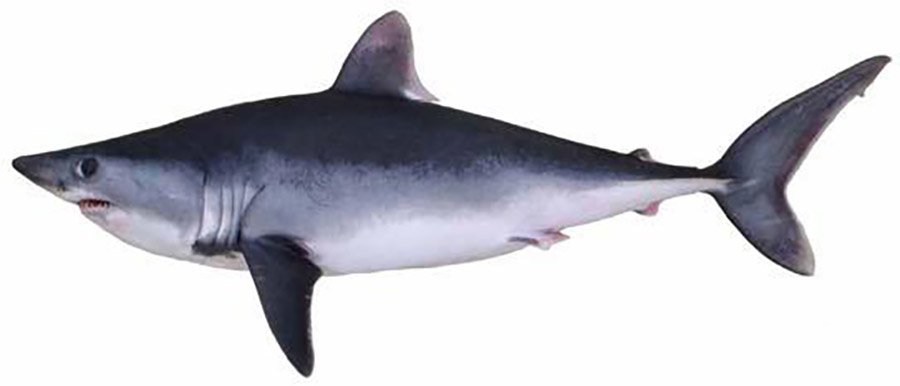
- Scientific Name: Lamna nasus
- Found in: Cold and temperate marine waters of the North Atlantic and Southern Hemisphere
The Porbeagle Shark, part of the mackerel shark family, is a large, powerful predator known for its big eyes and torpedo-shaped body. It’s characterized by a robust body, conical snout, and crescent-shaped tail. Porbeagle sharks primarily feed on bony fish and cephalopods, and they’re known to make deep dives, possibly to hunt for food.
Did you know? Porbeagles are one of the few shark species that can elevate their body temperature above the temperature of the surrounding water, an adaptation known as regional endothermy.
Celestial Goldfish
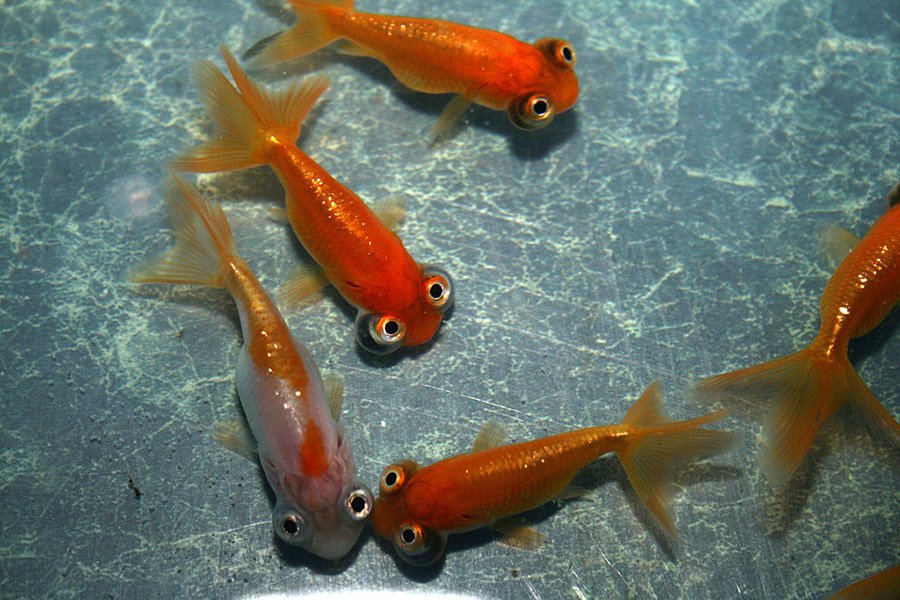
- Scientific Name: Carassius auratus
- Found in: Domestic aquariums worldwide
The Celestial Goldfish, a variety of fancy goldfish, is an ornamental breed with unusual eye characteristics. Its eyes are large and bulging, and they’re directed upward. Due to its lack of dorsal fin and upturned eyes, it’s not the most agile swimmer and does best in a calm, predator-free environment. It’s a popular choice for aquarium enthusiasts for its unique appearance.
Did you know? Celestial Goldfish were first bred for their distinctive eye position during the Tang Dynasty in China.
Final Thoughts
And there you have it, our top 15 fish with big eyes! Isn’t nature truly amazing? From the depths of the oceans to the tranquility of a home aquarium, each of these fish has developed large eyes to adapt to their specific environments.
Whether it’s to navigate murky waters, hunt in low light conditions, or simply for display, these fish show us that in nature, there’s a reason for every adaptation.
Thank you for joining us on this exploration. We hope you’ve found it as fascinating as we did. Keep your eyes wide open for more intriguing insights about the wonderful world of animals!
